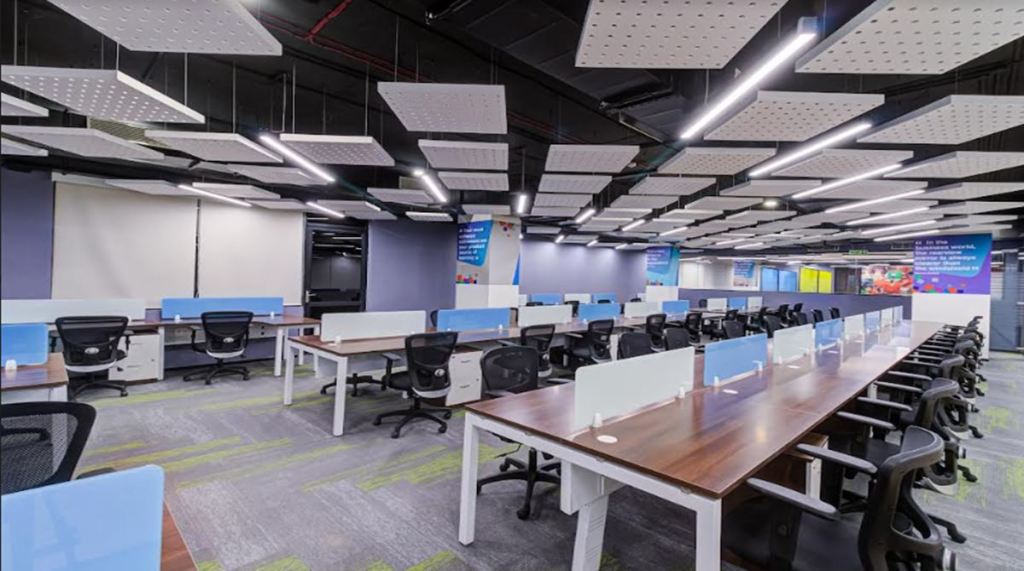The co-working space has evolved in India since its inception and has been growing at a swift pace. According to research by Mordor Intelligence, the co-working space market size in India will be USD 1.78 billion in 2023. The market is fuelled owing to the healthy and collaborative work environment it provides for clients across the spectrum, including large organisations, startups, and even small businesses.
Moreover, companies’ bottom lines have also driven the demand for these new-age working spaces, who are offering state-of-the art amenities, tech-enabled workspaces, and flexible tariff options. With the increasing demand, the industry leaders are now moving on the next phase of co-working spaces, where the focus has shifted towards technology, multiple locations, seamless space designs, and enhanced amenities.
More focus on technology
The ongoing trends going on in the market suggest that co-working space owners are now more focused on technology. Co-working spaces are providing video conferencing, seamless data sharing, and lightning-fast Wi-Fi connections to meet the demands of new-age organisations. Moreover, smart workspaces are entering a new era brought about by the IoT. It is enabling co-working spaces to optimise resource utilisation with automatic lighting, temperature control, and smart occupancy sensors. Additionally, co-working spaces are utilising client information powered by AI to create customised services, anticipate demands, and boost productivity. In addition, tasks like scheduling and guest sign-ins are streamlined by intelligent automation.
Also Read: 6 things to know before taking a loan against fixed deposit
Multi-locations are becoming the norm
As the organisations are striving to adopt new ways of working, such as hybrid models, they have realised that co-working places provide the convenience of working in a manner similar to an office environment. Co-working office providers with a nationwide presence in India are witnessing an increase in requests for workspaces in smaller towns, particularly from businesses looking to give their staff members the freedom to work from any location. This is because individuals prefer spaces with multiple locations within cities because they can choose to work from any of the sites. As a result, it is helping the co-working space providers grow their operations into Tier-2 cities and beyond.
Seamless space designs
The popularity of co-working is largely due to collaboration, and this is why collaboration zones are given even more importance. These spaces are intended to support unplanned gatherings, brainstorming sessions, and informal member interactions. In this regard, one can anticipate comfortable alcoves, airy lounging areas, and imaginative breakout rooms that stimulate creativity and networking. Shared offices offer flexible layouts that can be adjusted to individual workstyles, modular furnishings, and adjustable desks for members who want to personalise their workspace to meet their needs and tastes. This demonstrates how co-working space architecture has changed for the better and that more modifications are planned.
Enhanced amenities
In response to the diverse needs of businesses, industry leaders have been providing modern-day amenities to their clients. Co-working spaces are providing specialised support for remote teams as a result of the continuous move towards remote work. This includes online collaboration tools, virtual office services, and spaces set aside for online meetings and webinars. Additionally, co-working places are also allowing membership portability. It means that employees at one site can access locations within the same network, regardless of whether they are nearby or across the globe. Companies are increasingly willing to consider a combination of fixed and flexible seat options due to the peak demand for spaces in co-working offices in several of the major marketplaces. These agreements are increasingly being made between organisations and co-working office providers to guarantee that workers always have a place reserved at a designated time.
All things considered
In summary, it can be claimed that a variety of factors will continue to propel the co-working sector’s growth in the next few years. Firms are realising that they need to limit costs and provide the greatest work culture possible for their employees, which is why the number of firms searching for co-working spaces is growing daily. Along with growing and changing commercial real estate, the co-working sector is also bringing in new concepts for office space and diversifying its markets. Because of this, the leaders in the sector have been establishing trends that centre on technology, having several locations, seamless space designs, and improved facilities. As a result, the sector is undergoing a number of revolutionary developments that are turning out to be advantageous to the occupants.
(By Sanjay Choudhary, Founder and CEO, Incuspaze. Views are personal)

